
Review: MSI AM2+ overclocks great
We have benched the new Phenom II CPUs recently. Because we are always in a hurry, we could not introduce the board which we have used for testing. Today we will take a look at it.
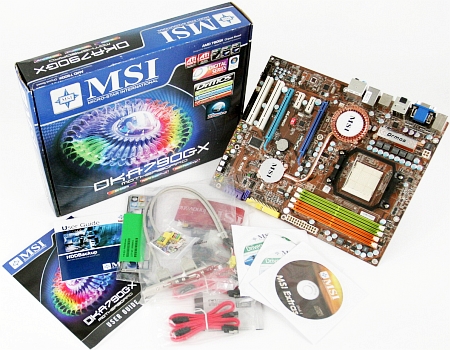
Features:
AMD 790GX/SB750
4+1 phase VRM
Realtek ALC888
Realtek RTL8111C PCIe Gb LAN controller
Fintek F71882FG super I/O controller
RTM880N clock generator
passive cooling of chipsets/VRM
8Mb BIOS, version 1.7b2
Mainboard Revision: 1.21
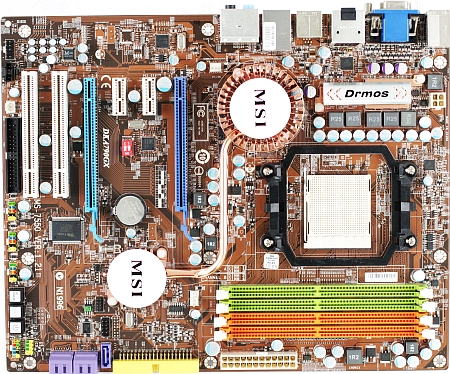
Slots:
2x PCIe 2.0 x16
2x PCIe x1
2x PCI
Memory:
4x Dual-Channel DDR3-slots for PC2-10667U memory up to 8GB
Storage:
5-Port SATA II featuring RAID 0, 1, 5, 0+1, JBOD
1-Port IDE
1-Port Floppy
1-Port eSATA
Backpanel ports:
1x PS/2 keyboard
1x HDMI
1x DVI
1x VGA
1x Gb LAN
6x USB 2.0
7.1 analog output
1x optical out

Accessories:
4x SATA cable
1x IDE cable4x SATA cable
1x 2-port USB 2.0 bracket
2x HDD-power to SATA-power
1x 2-port USB 2.0 bracket
BIOS features:
Bus Speeds: Auto, 200MHz to 600MHz in 1MHz increments
Memory Ratios: Auto, Limit, 400, 533, 667, 800, 1066
HT Link Speeds: Auto, x1 to x13 in x1 increments
Adjust PCIe Speed: 100MHz to 150MHz in 1MHz increments
DRAM command rate: Auto, 1T, 2T
DRAM timing control: Auto, manual
CPU Clock Multiplier: Auto, 4x to 32.5x in 0.5x increments
CPU NB Clock Multiplier: Auto, 4x to 20x in 1x increments
CPU Voltage: Auto, 1.335V to 1.995V in 0.01V increments
CPU VDD Voltage: Auto, 1.1000V to 1.5500V in 0.0125V increments
CPU PLL Voltage: n/a
CPU NB Voltage: Auto, 1.1000V to 1.5500V in 0.0125V increments
DRAM Voltage: Auto, 1.80V to 2.10V in 0.05V increments, 2.20V, 2.30V
Northbridge Voltage: Auto, 1.20V to 1.50V in 0.05V increments
HT Link Voltage: Auto, 1.25V to 1.50V in 0.05V increments
Layout:
The board appears rather unspectacular, with an old style brown PCB. The only difference between this board and the Platinum Edition are the missing 128MB sideport memory and Firewire ports. It strikes us as very odd to have two versions of the same board. Gamers will put in a graphics-card anyway, but 128MB sideport memory are so cheap, so is the Firewire chip.

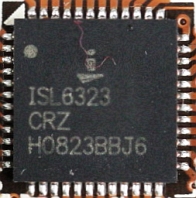
The VRM is an analog 4+1 phase design driven by an ISL6323. This is a controller made for AMD split-plane CPUs, so you won't find this on any Intel board. As expected it can handle CPUs up to 140W TDP. The CPU-power connector is only a standard 4-pin, we would liked to have seen an EPS connector which is standard on all their Intel high-end boards.
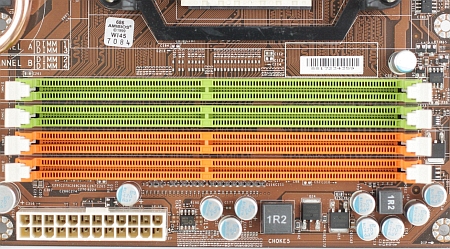
The memory slots are too close to the CPU socket. As long as you use only two modules, you can use the orange slots to keep heatpipes of some CPU-coolers away. Otherwise you have to be very careful selecting the CPU-cooler, also if you are using memory-modules with big heatsinks, such as Corsair Dominators. MSI engineers didn't quite think that through. Below the memory slots resides the ATX 2.2 power connector.
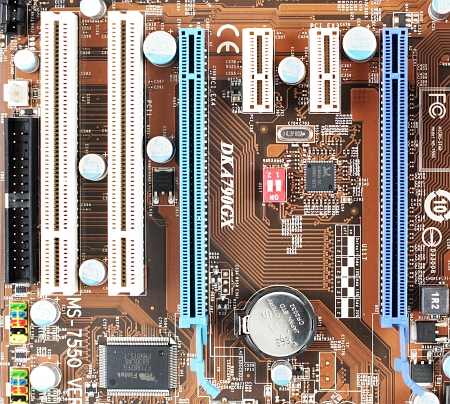
The slots are configured in typical MSI style. Using two triple-slot Radeon cards in Crossfire-configuration will steal all your slots. While this board is designed for Crossfire, the board misses an additional PCIe power socket, so you should not try saving money with a cheap power-supply, when you are planning to use Crossfire. Between the PCIe slots you find two useless jumpers. First the locations is totally wrong, you can't access them if you have a dual-slot card and dare to use something like an additional sound-card, second this jumper offers 10%,15% and 20% FSB overclocking capability. For users who want to overclock they will do it by BIOS or AMDs Overdrive Utility and non experienced users won't care, because the jumper doesn't increase all the necessary voltages.
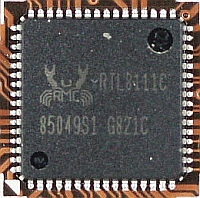
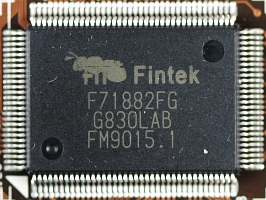
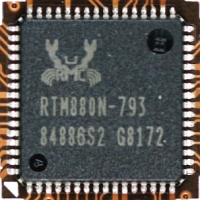
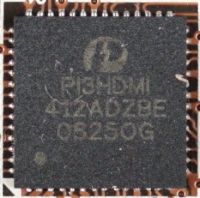
For some reason all vendors go for the cheapest PCIe Gb LAN solution on the market, which is the Realtek RTL8111C. It is not known for very good performance, especially the I/O load is quite weak. A Marvell, Broadcom or Intel chip would have been a better choice, but of course opting for a better chip would also have increased costs. Audio is also provided by a Realtek chip: the ALC888. The Fintek chip is a super I/O controller, for all legacy devices, such as floppy, LPT and COM ports but you won't find any connectors for that besides floppy, so the controller just manages fans and sensors. Also the clock generator is a Realtek chip, so it seems this board has been designed for lowest possible cost. The forth chip is used to provide HDMI.

The SATA connectors are on the edge of the board and four of them are angled 90°. This is the best solution available because the connectors won't interfere with any cards. Also the PATA connector is angled, very good. The board has only one eSATA port which has been taken from the SB750, so you get only five internal connectors which should suffice for most users. This part of the board is nearly perfect.
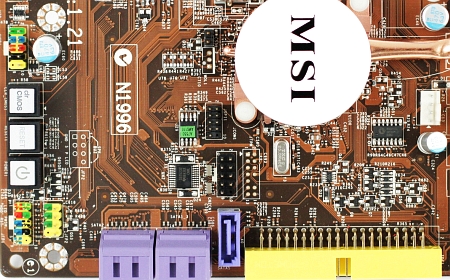
As usual all boards feature CMOS Clear, Reset and Power-On Button. While there would have been lots of space on the backpanel, for some reasons the CMOS Clear button is not there, which would have been the smarter solution.
BIOS:
As usual MSI is using a AMI 1MB BIOS. We have ranted about some stupid BIOS settings in the past, and guess what, nothing has changed. We have no idea which gamer is using serial ports and floppies, especially because MSI has finally managed to include a BIOS flasher in the BIOS itself, that took only two years. So if you see Executive Bit, HPET and/or SMART disabled, we strongly recommend you enable it.
FSB-Overclocking:
The board was stable with 265MHz FSB, which is quite an achievement.
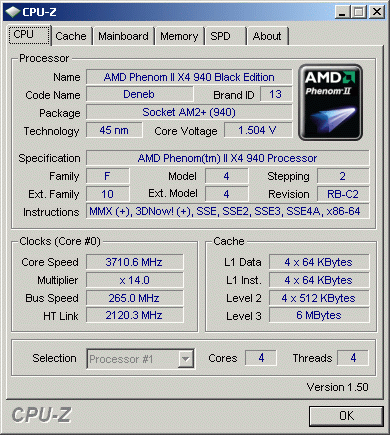
With a Black Edition you don't need to overclock via FSB, just increase the multiplier and there you go.
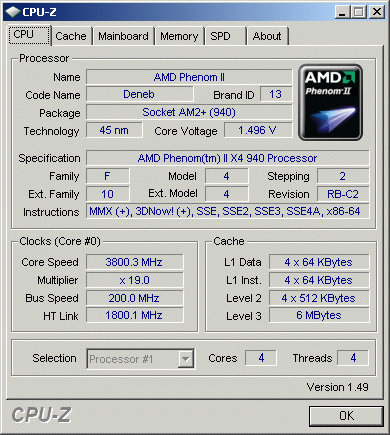
Memory:
The board auto-detects 800MHz, but you can change the multiplier easily so the CPU does 1067MHz.
Conclusion:
We have not included benches this time, you can check them out at our previous review. The other reason is, we have a new test setup with some enhancements which we will introduce shorty.
While we are not happy with some design decisions, the connectors for the SATA and PATA are located at the best possible position. Most importantly the board worked stable and fine.
We hope that some BIOS issues will get resolved, as we discussed it with MSI far too many times. Anyways, every experienced user should be able to set the BIOS correctly. If you are unsure of some settings, drop us an email, we will try to help you.
The board does offer nice overclocking capabilities. Besides that, MSI has the most energy-efficient boards in the market. The only problem is the price. As you can see this board is priced about €106,- which is over €30,- more expensive to other comparable boards. The Platinum Edition is €20,- more expensive and offers only Firewire and 128MB sideport memory. While a second graphics card may come in handy, for gamers it doesn't offer serious gaming-power. If you have the extra cash, the hardware will not disappoint you.
